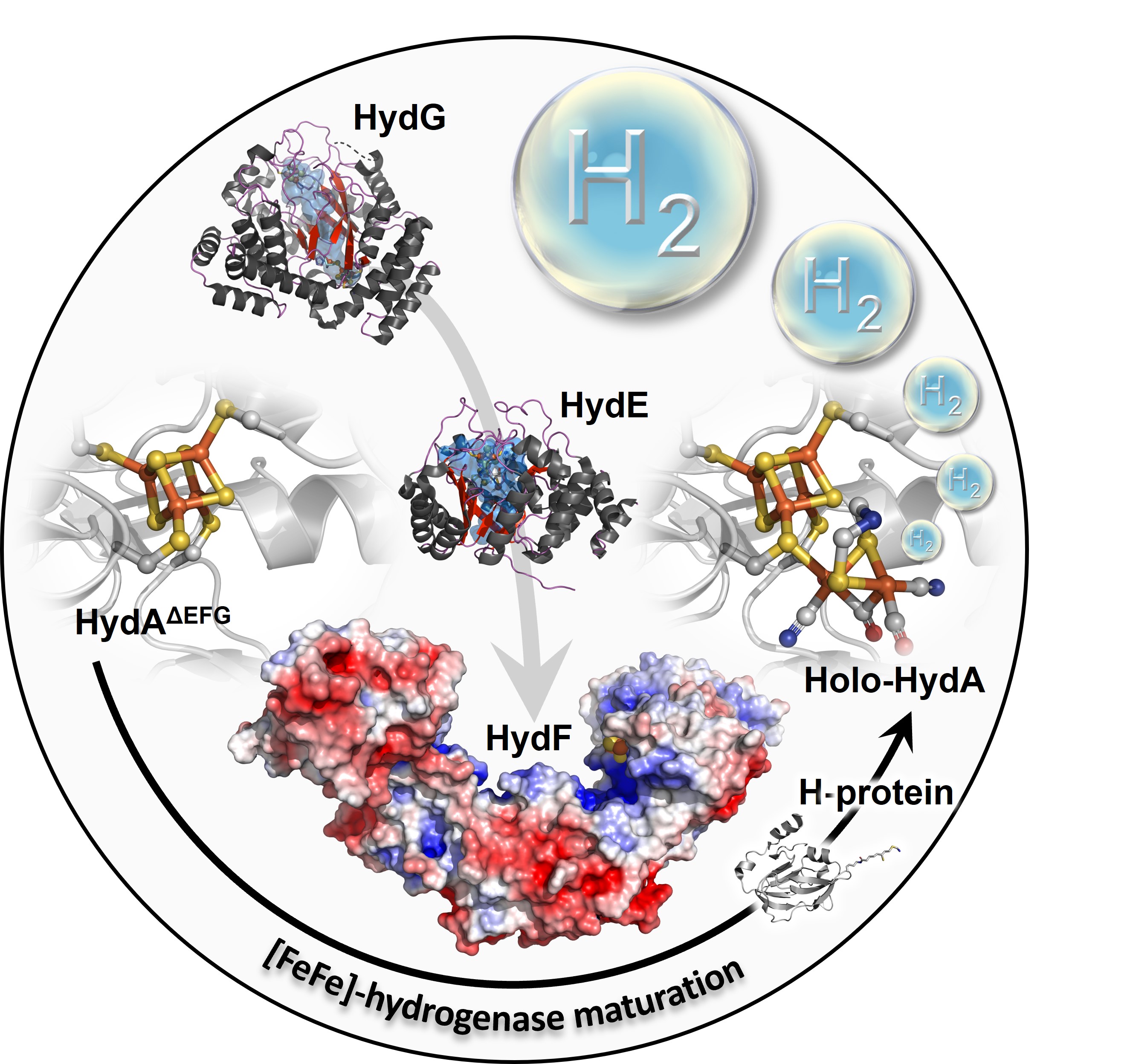Research Projects
Mechanisms of Radical SAM Enzymes
We are working to delineate the detailed chemical mechanism of radical generation by the radical SAM superfamily of enzymes. These enzymes use iron-sulfur clusters and S-adenosylmethionine to initiate essential and diverse radical reactions, and are represented across all kingdoms of life. With over 100,000 unique sequences identified, the radical SAM enzymes comprise one of the largest known superfamilies. The widespread occurrence of these enzymes throughout biology, from bacteria to humans, is indicative of the significance of the chemistry catalyzed by these enzymes. In humans, radical SAM enzymes are involved in the biosynthesis of lipoic acid, the synthesis of heme, the antiviral response, and the biosynthesis of the molybdopterin cofactor, among many other essential functions, some as yet unidentified. Despite the diversity of reactions catalyzed, our overriding hypothesis is that the adenosylmethionine-dependent iron-sulfur enzymes all operate by a common mechanism in which a reduced cluster interacts with S-adenosylmethionine to generate an adenosyl radical intermediate, which is directly involved in catalysis. These reactions represent novel chemistry for iron-sulfur clusters. To investigate this novel chemistry, biochemical, spectroscopic, mechanistic, and structural studies of pyruvate formate-lyase activating enzyme (PFL-AE), lysine 2,3-aminomutase, spore photoproduct lyase, viperin, and other radical SAM enzymes are being pursued.
Biogenesis of the H-Cluster of Hydrogenase
Hydrogenases are metalloenzymes that catalyze the reversible reduction of protons
at unusual metal centers. The complex metal cluster at the [FeFe]-hydrogenase (HydA)
active site, known as the H-cluster, is composed of a 2Fe subcluster that is anchored
within the active site by a bridging cysteine thiolate to a [4Fe-4S] cubane. The
2Fe subcluster contains carbon monoxide, cyanide, and bridging dithiolate ligands.
H-cluster biosynthesis is now understood to occur stepwise; standard iron sulfur cluster
assembly machinery builds the [4Fe-4S] cubane of the H-cluster, while three specific
maturase enzymes known as HydE, HydF, and HydG assemble the 2Fe subcluster. HydE
and HydG are both radical S-adenosylmethionine (SAM) enzymes that interact with an iron-sulfur cluster binding
GTPase enzyme, HydF, during the construction of the 2Fe subcluster moiety. In a remarkable
biochemical reaction, HydG cleaves tyrosine and decomposes the resulting dehydroglycine
into carbon monoxide and cyanide ligands. The role of HydE in the biosynthetic pathway
remains undefined although it is hypothesized to be critical for the synthesis of
the bridging dithiolate. HydF is the site where the complete 2Fe subcluster is formed
and ultimately delivered to the immature hydrogenase protein in the final step of
[FeFe]-hydrogenase maturation. This work addresses the roles of and interactions
between HydE, HydF, HydG and HydA in the formation of the mature [FeFe]-hydrogenase.

